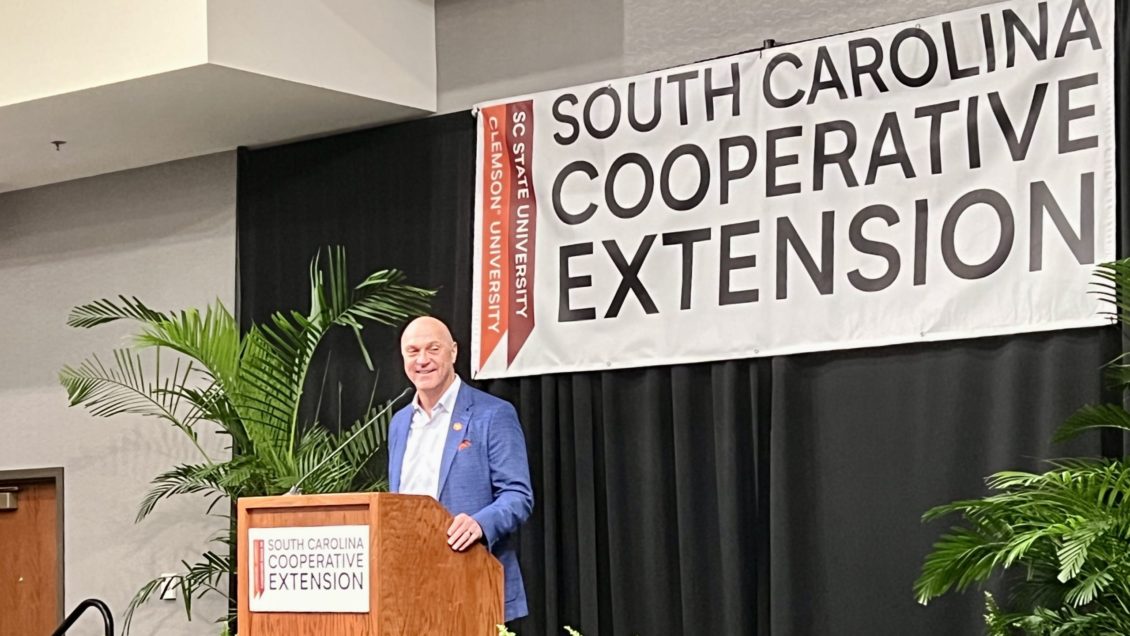In 2013, after James P. Clements was announced as the next president of Clemson University, he was given the opportunity for three trips to campus to meet with leadership teams and various units before he officially began work in December.
“I was very intentional — and the first meeting was with Extension personnel. And lot of people asked me, ‘Why do you want to meet with Extension?’ And I said, ‘That’s who we are. We’re a land-grant university,’” Clements said.
Clements relayed the tale this month, nearly 10 years on, to a crowd of Clemson Extension and South Carolina State 1890 Extension personnel at a joint conference between the state’s land-grant institutions. But Clements said the real point to his story was he had never lost sight of the value of Extension in the decade since.
“I would still take that same meeting first if I had to do it again today,” Clements said.
As a testament, perhaps, to Clements’ emphasis on the Clemson Cooperative Extension Service and the land-grant mission, Clemson University hosted the first joint Extension conference in the state’s history last month with its sister land-grant institution from Orangeburg.
While holding the first joint Extension conference in the state of South Carolina had long been talked about, bringing it to fruition was no small feat.
Clemson Extension Director Tom Dobbins says he’d long recognized the need for collaboration between the two Extension services.
“Now that we’ve got so many new faces, I thought it was time that we come together,” Dobbins said. “Working with (Associate Extension Administrator) Edoe Agbodjan at South Carolina State, it was just great that we could bring our brothers and sisters together here to meet and work together as a system to address the needs of the people of South Carolina.”
Dobbins said in order to accomplish that goal — addressing the needs of all South Carolinians — it would take each person in the room working as hard as they possibly can.
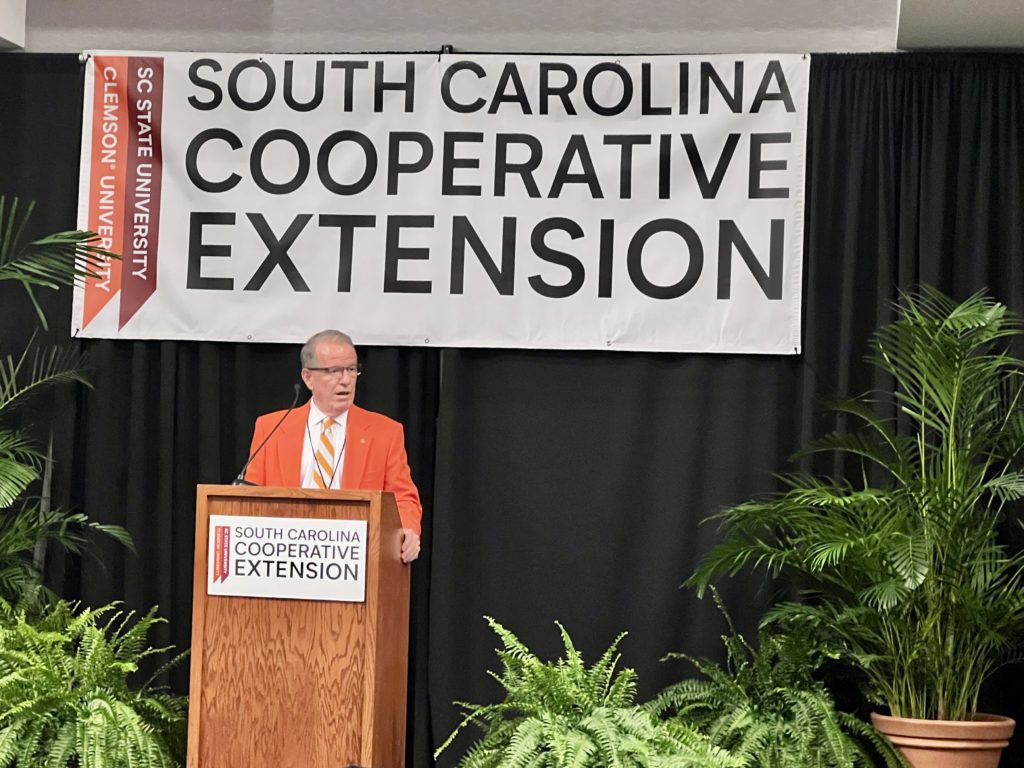
“If you work in Extension, you will make a difference in a lot of people’s lives and your legacy will be built for you,” Dobbins said. “You don’t have to worry about that.”
Looking around the room, Agbodjan echoed Dobbins’ sentiment, saying that while there were many differences in the people he saw, one thing they had in common was passion to change people’s lives.
“We are not here just because we want to be here; we are here because we are serving a cause — the cause is to help people,” Agbodjan said. “We bring the university to the people. We come to you and sit across the table from you, and we try to find out how we can work together to better your life.”
Agbodjan said his first experience with Extension came as a child in Togo, West Africa, when an agricultural professional would come to his family’s farm to offer advice to his grandfather on best practices. Agbodjan said he got to witness firsthand the effect such insight — and more importantly, the access to such insight — could have on a farm’s success.
“I looked at him and I said, ‘Woah, this is one of the things I can do that means I won’t have to do these odds jobs; I can work on the farm without breaking my back.’ … That brought something to me that said, ‘I have to be in that line of work because I can make a difference,’” he said. “So, when I finished high school, I told my grandmother that I wanted to go to America to go to an agricultural school … because I had that drive to be that Extension person.”
The history of the national land-grant system is tied inextricably to the state with the Smith-Lever Act of 1914 that created the national Extension service. Frank Lever was the son of a South Carolina farmer and a trustee at Clemson University, as well as a U.S. Congressman, who saw the need for a model to bring the knowledge of the university to the farmers and people of South Carolina.
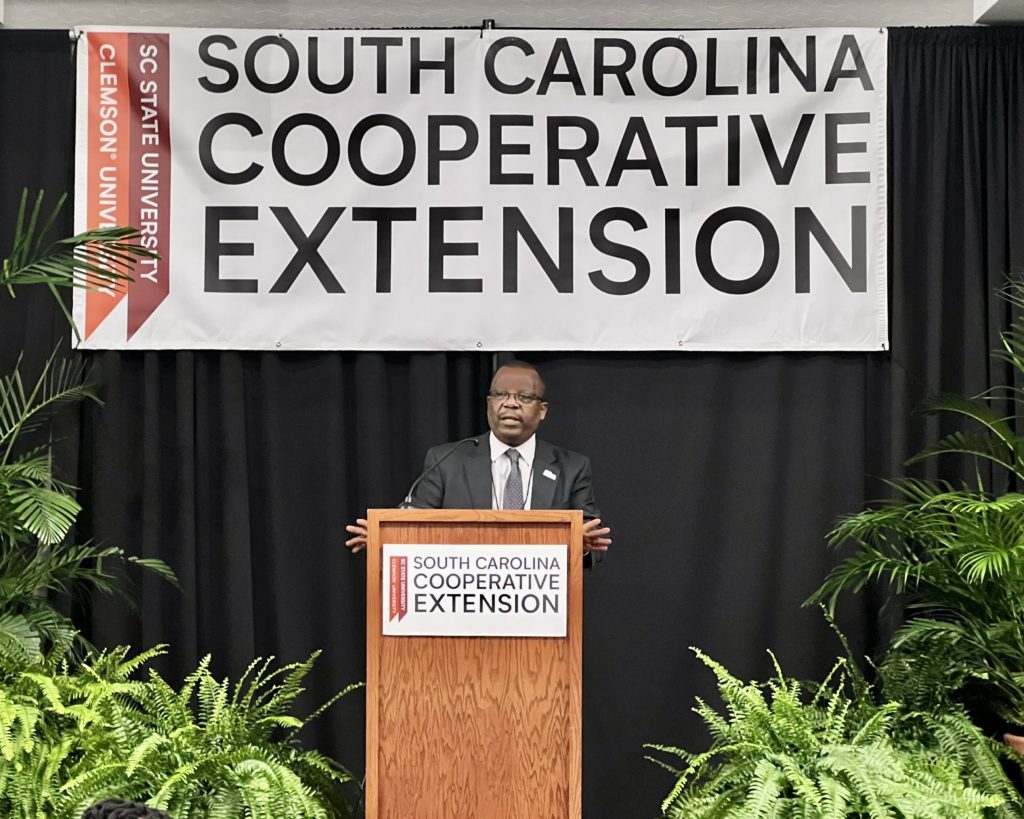
“That model, in 1914, became the national Extension system. So, Mr. Lever, was right on that model and its impact — and the need continues for services,” Clements said. “Go way beyond what was there then, to 4-H to Forestry to Wildlife to Rural Health to Livestock … I could go on and on. Everybody in this state benefits from your work.”
Clemson College of Agriculture, Forestry and Life Sciences Dean Keith Belli said one of the three pillars of the Clemson’s Strategic Plan is to make an impact on the state of South Carolina, and that the Extension Service “have got to be the poster child for that third pillar.”
“The impact that we have on this state, this is what it’s all about,” Belli said. “What you do, how you synch up with the research that we’re doing, how you help bring new students … this is where the rubber meets the road. All of you in this room. This is what the land-grant mission is all about. I can’t state it any more strongly: This group of people make up the heart and soul of this university, and for South Carolina State University, and its land-grant mission.”
S.C. State 1890 Research and Extension Vice President for PSA Louis Whitesides said the real purpose of the conference was to encourage more collaboration on the ground level between the two sister Extension services.
While it was relatively simple for himself and other S.C. State Extension administrators to work with Dobbins and Belli and their other counterparts at Clemson, there had not always existed such ease of collaboration on the most basic levels.
“It’s easy for us to work together because we’ve known each other for a long time, but a lot of you don’t know each other — and y’all are in the same counties and same regions. That’s a problem. So, that’s why we integrated together to start the process to make sure we sustain our spot as the No. 1 land-grant system in the country.”
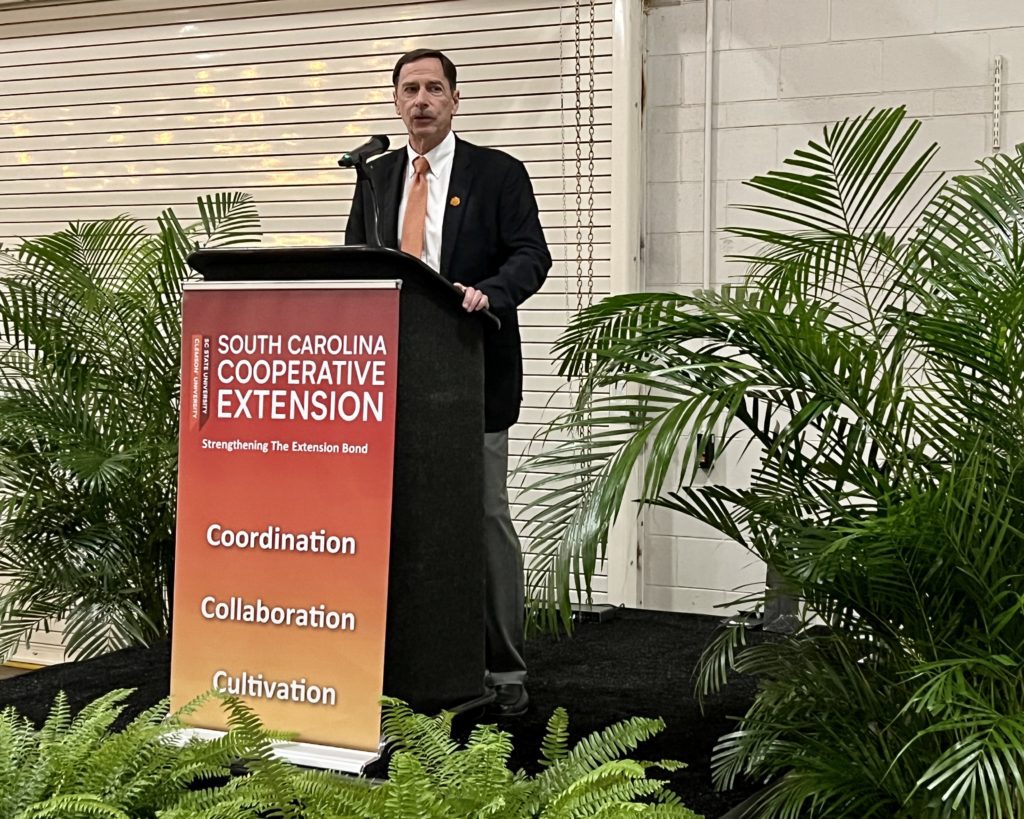
Established by the Morrill Act of 1862, the land-grant system was put in place to build our nation, and that’s exactly what it did. In the years following the Civil War, efforts to rebuild the economy focused largely on supporting the nation’s No. 1 industry: agriculture.
More than 150 years later, agriculture remains the No. 1 industry in the American economy, and the Extension system continues its work in support.
“They knew for us to grow our economy, we had to educate the common man. And so land-grant universities were born — to do just that,” Whitesides said.
But even still, the first Morrill Act only allowed for the education of white Americans, and so 28 years later, the Second Morrill Act required states to establish separate land-grant Institutions for Black students or demonstrate that admission to the 1862 Land-grant was not restricted by race. The act granted money, instead of land, and resulted in the designation of a set of Historically Black Colleges and Universities (HBCUs) as land-grant universities to begin receiving federal funds to support teaching, research and Extension intended to serve underserved communities.
State Sen. Thomas Alexander also commended the Extension personnel on hand for their work and the impact they have on the state of South Carolina daily.
“It means a lot to me to have the opportunity to address you on behalf of the people of the state of South Carolina — the 5.2 million people who make up this great state — and as I look around this room … I am a great fan and longtime fan of the Extension service,” Alexander said. “I grew up with individuals in the family who were involved in Extension, and it gave me a great, great appreciation for the work you do.”
“I believe in what you’re doing in the communities and the counties across South Carolina to make life better for our citizens. For these two great universities to come together and collaborate and cooperate and do all the things that make South Carolina a very special place … I commend you, not only to the leadership for making it happen, but for everyone here to be a part of this,” he added.”
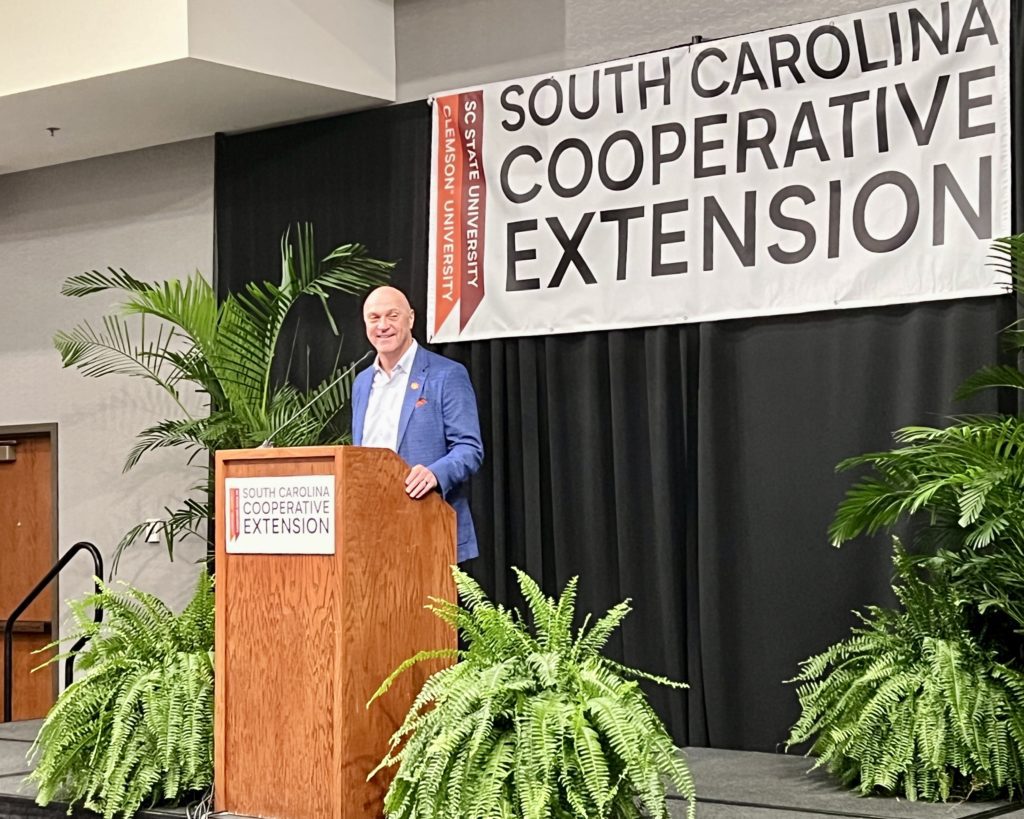
S.C. State President Col. Alexander Conyers addressed those gathered by reflecting on success that had already come about due to the collaboration of the two Extension services, including the Joint Plan of Work — which eventually became a national model — as well as shared Extension office space, the creation of a Joint Extension Advisory Committee, joint federal and state legislative advocacy and inclusion of S.C. State Extension agents in Clemson’s EELI program.
“And just two months ago, we gathered in Orangeburg to celebrate the announcement of the $70 million U.S. Climate-Smart partnership grant, making us the only land-grant recipients in the country.”
While both university presidents praised the historic nature of the first joint Extension meeting between the two sister land-grant schools, Clements was quick to point out that this conference was just the beginning.
“It’s not going to be the last time. We’re opening a new level of collaboration, a new level of teamwork and a new level of impact,” Clements said.
Get in touch and we will connect you with the author or another expert.
Or email us at news@clemson.edu

